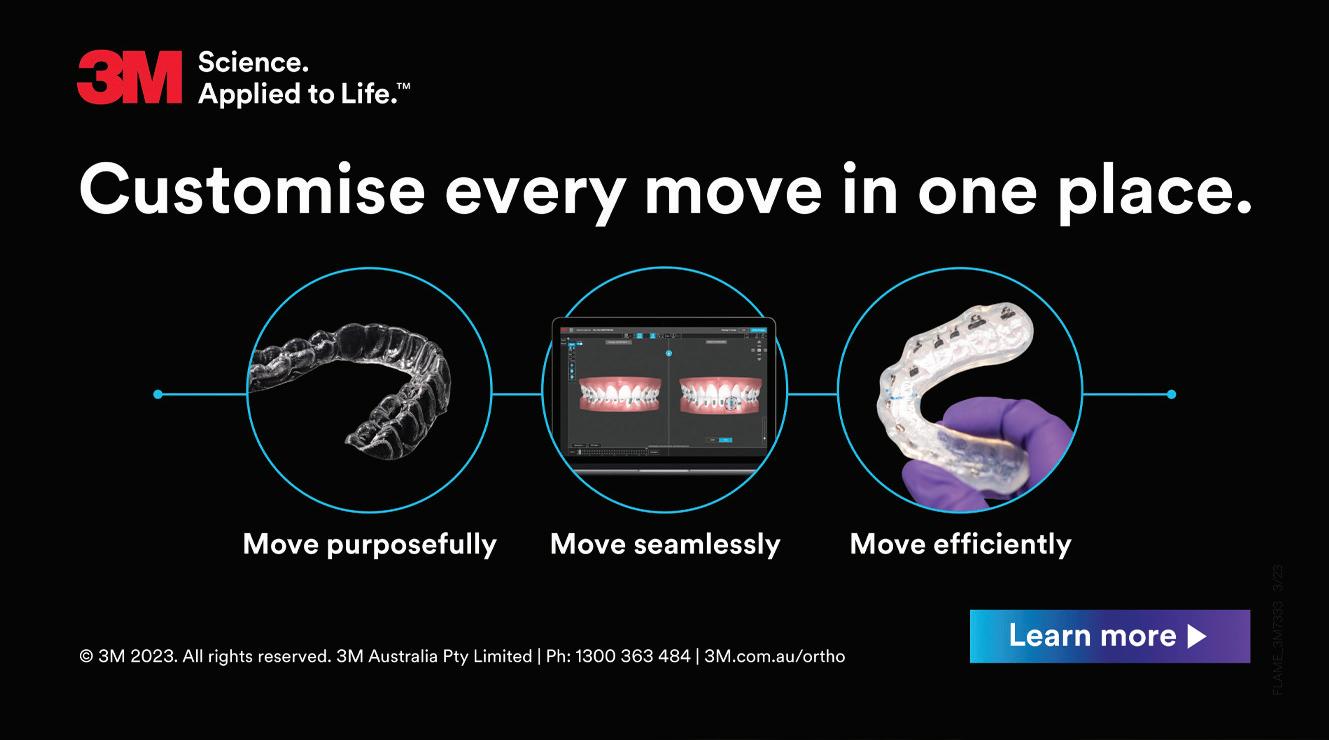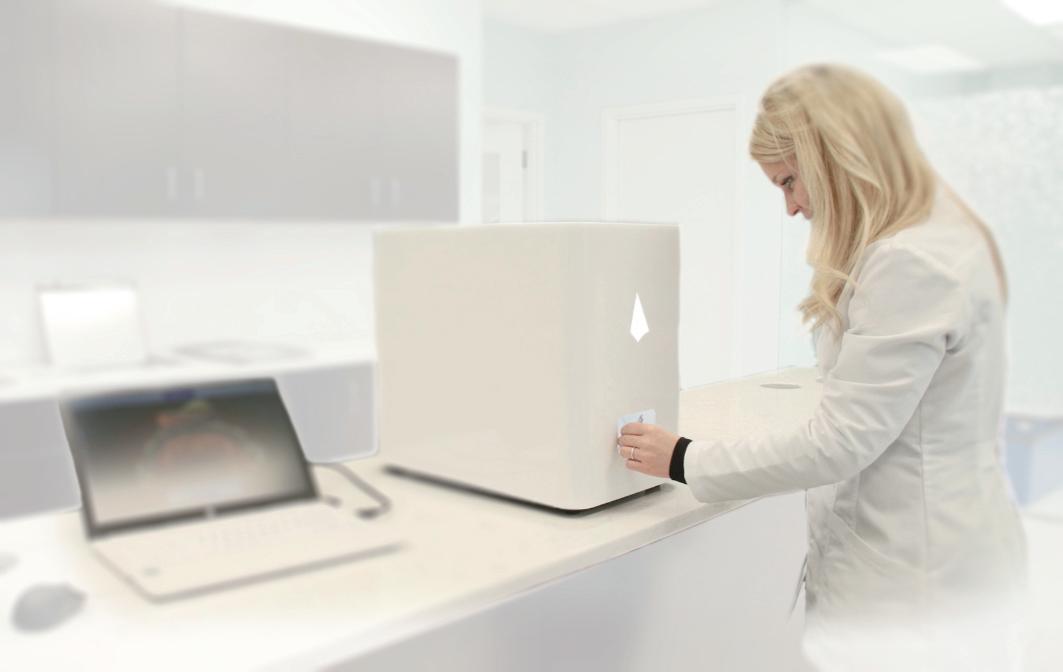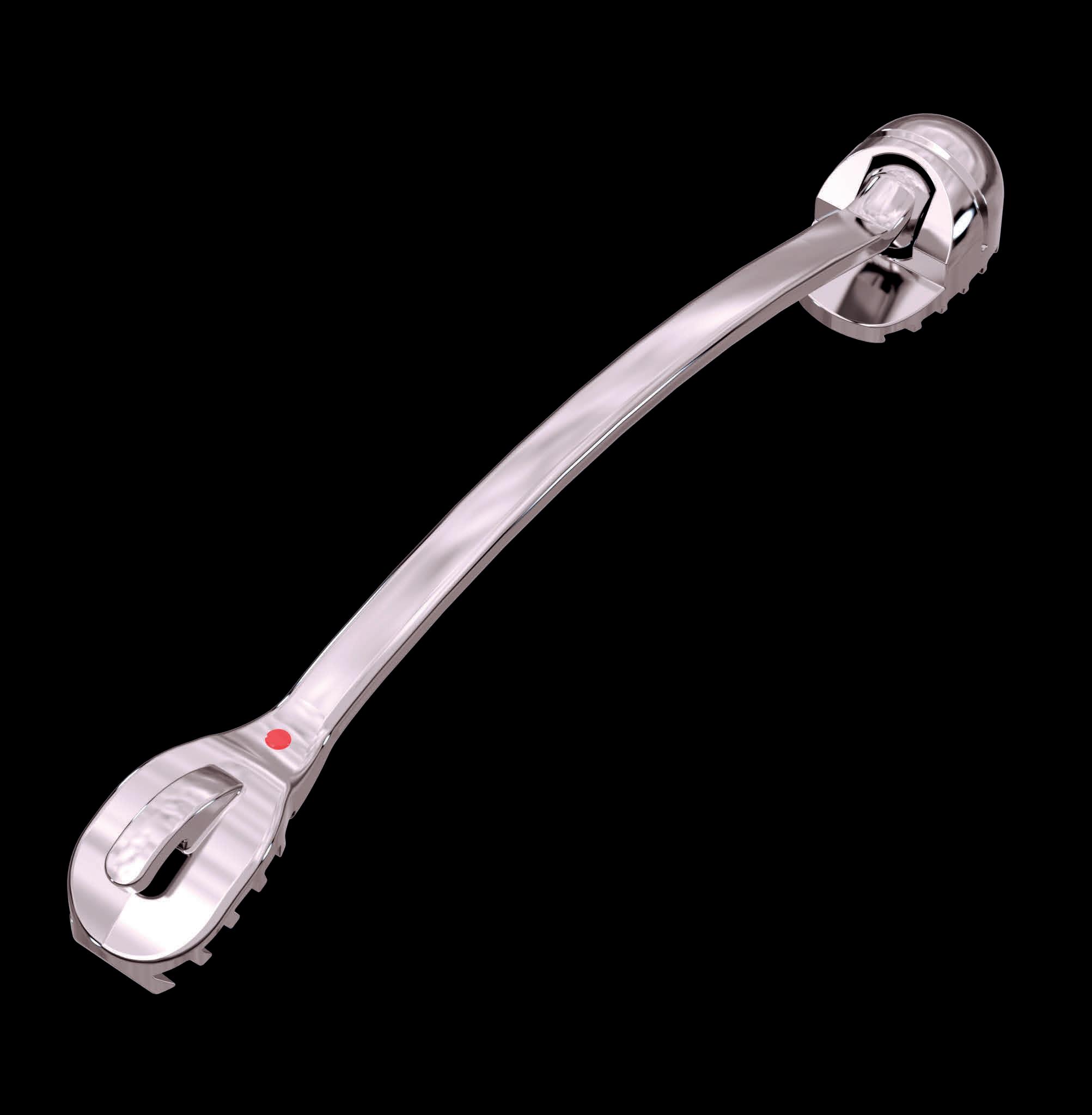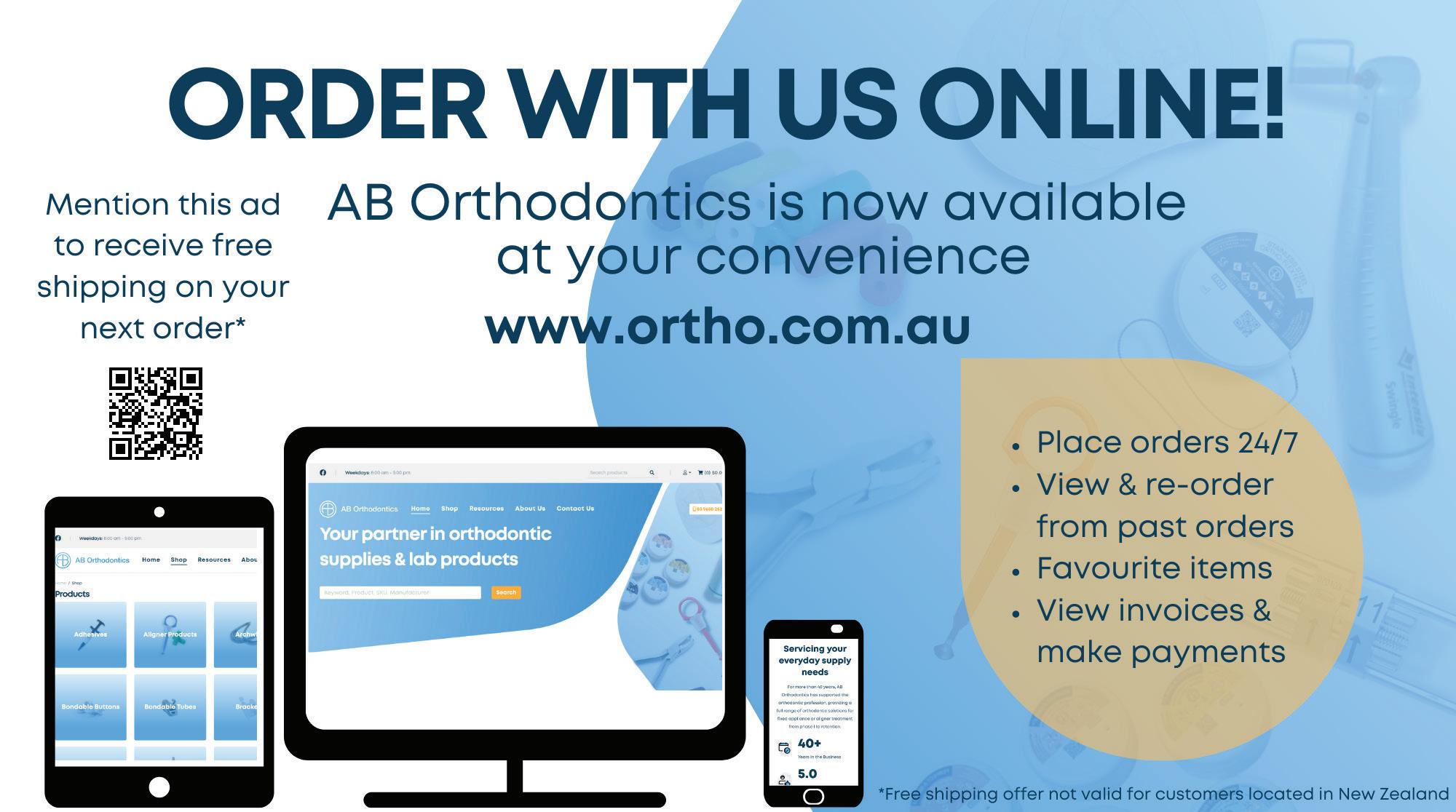LEGAL MATTERS

Mental
PRACTICE MANAGEMENT
Is your practice ready to survive a cyber-attack?




Mental
Is your practice ready to survive a cyber-attack?


The 3M Oral Care portal allows clinicians to customise each patient’s treatment using Clarity Aligners Flex + Force in a single treatment design. Key to the user experience of advanced Tx Design is the ability to work seamlessly with multiple treatment modalities and combination treatments, for example using Clarity Aligners and 3M Digital Bonding Trays.

There’s no more jumping between multiple systems or brands—it’s an integrated experience that allows you to explore options and create the best plan regardless of the modality for truly customised treatment.
At its core, orthodontics is all about coaxing the body to remodel itself. Aligners are good at gently suggesting that to the body. But to achieve tooth movement, aligners also need to maintain force over the course of weeks. The material in Clarity Aligner Flex has excellent force persistence. In fact, Clarity Flex Aligners maintain a consistent force over two weeks, retaining 75% of its initial force*, toward a goal of prediction accuracy in treatment designs.
Clarity Aligners Flex can cover the gingival margin, giving orthodontists more choices for placement of attachments—which also engage well with the new material. The final result achieves our goals of advancing the materials science in aligner treatment. The new Flex material strikes the balance of the flexibility needed for easy insertion and removal with the rigidity needed for force persistence, durability, and stain resistance.
The 3M™ Digital Bonding System allows you to design truly customised treatment plans that bring added efficiencies to your practice. You design the customised treatment plan in the 3M™ Oral Care Portal, and the customised appliance is manufactured by 3M and shipped to your office.
When paired with our proprietary 3M™ APC™ Flash-Free pre-coated brackets, the appliance delivers brackets to teeth — an entire arch at once — with precision and accuracy.
For more information call your representative or visit go.3M.com/OCP.
*3M internal data on file.

ClinLegal is Australia’s first and only provider of digital employment law solutions, designed exclusively for dentists and doctors.

clinlegal.com.au
Most practices will have experienced the difficulties in managing poor performance or behaviour of an employee, which is caused (or contributed) by mental illness. In many cases, the performance management process needs to be adapted to limit the risk of exacerbating the injury due to work, and to maximise the chances of improvement. The time and resources required to manage the process can be significant and even debilitating, especially for small practices or those without legal/HR support. Considering these challenges, early disclosure of illnesses that may impact work is warranted to benefit all parties involved. This article summarises a recent case where an employee’s claim of discrimination and adverse action was dismissed due to failing to disclose the illness to the employer prior to commencement.
The employee was terminated for aggressive workplace behaviour, which he challenged on the basis it was caused by a mental health illness and autism diagnosis. The employer argued the employee should have disclosed his mental health issues and autism diagnosis to the employer prior to signing his employment contract. The employee filed a complaint seeking reinstatement of employment with an increase in salary, back pay, and compensation.
(Continued of Page 6)

The employee complained the termination was adverse action under the Fair Work Act. The employee alleged that the employer had discriminated against him because he had autism. The Fair Work Act states that an employer cannot treat an employee adversely (through action or inaction) due to a disability, although there is an exception where the disability/illness prevents the employee from performing the inherent requirements of the role.
Under the Fair Work Act, the court considered if the employer intentionally terminated the employee due to the illness; whether the termination actually occurred; the reasoning behind the employer’s decision to terminate; and whether all the available and relevant information supports the complaint.
The court decided that there was no evidence to indicate that the employee notified his employer that there had been a change in his fitness for work. The employee’s contract stipulated a duty to notify the employer of mental health conditions. The applicant argued that his mental illness would have been noticeable at work, so the employer had notice of his disability.
The court found that the employee failed to disclose his mental health illness contrary to his contract. The court also reasoned that no link could be established between the employee’s mental disability and the dismissal, thereby dismissing the complaint.
As an employer, it is very important to include a clause in your contracts to the effect that employees are required to disclose without delay, any illnesses (mental or physical) which may impact work. If you do not have such a clause, an employee would likely be successful in a complaint under similar circumstances. Additionally, knowledge of your employee’s health will inform you on his/her ability to meet the requirements of the role prior to commencing an employment relationship, or allow you to manage the risks early on, if it arises during employment. Early knowledge and disclosure would therefore benefit all parties involved.
This article is produced by an external third party (not the ASO) for guidance purpose only and is not a substitute for legal advice. Legal advice should be sought for individual circumstances. For tailored advice for your Practice, please email info@clinlegal.com.au.


The legal test applied to determine if a person is an employee or contractor has recently changed, following a decision from the High Court of Australia. This article summarises the changes, and reiterates the importance of having a clearly written contract in place, that identifies the relationship.
ClinLegal
In a recent decision, a contractor was terminated based on his slow performance. The contractor lodged an unfair dismissal claim with Fair Work, arguing that the dismissal was harsh and unreasonable, and he was an employee.
clinlegal.com.au


The commission carefully considered the contractor’s control over his own work and applied a multifactorial test to determine his status. After weighing up multiple indicia, it was decided that the worker was considered an employee and therefore protected from unfair dismissal under the Fair Work Act.
The employer appealed the decision, arguing that in light of recent legal decisions, the legal test for determining whether the worker
is Australia’s first and only provider of digital employment law solutions, designed exclusively for dentists and doctors.
is an employee or contractor is determined by considering the ‘terms of the contract between the parties.’ Consistent with the contract, the employer relied upon several indicia to support that the worker was an independent contractor, not an employee. This includes:
1. The worker conducted his own business in providing services
2. The worker was not personally required to perform services, in that they could be provided by a company or another person

3. Under the contract, the employer did not have the right to control the worker’s performance of services
4. The worker was able to work for competitors, which indicates an independent contractor relationship
5. The worker was required to supply their own vehicle to be used for work
6. The worker was required to pay tax, have an ABN, and obtain third-party liability insurance.
On appeal, the commission decided that the worker was an independent contractor, not an employee. The commission agreed that the employer lacked control over the worker. This was supported by clause 2.5.1 of the contract, which stipulated that when the worker drives in the course of work, it is up to him to use any route he determines safe and efficient. In addition, the commission considered it important that the resources used by the worker for the performance of services, was at the discretion of the worker.
The commission emphasised that the worker has control over how the work is performed, thus discharging further control from the employer.
This, in combination with the inability of the employer to require the worker to perform any particular task, further limited the employer’s control over the work, indicating a contractor relationship.
It is paramount for an employer to outline the role of the employee or contractor clearly. As an employer, if you decide to hire an independent contractor, you must clearly state that the worker will have control over when, where and how they conduct their work. This may be supplying their own tools and materials, raising their own invoices for services provided to the public, handling their own accounting obligations, maintaining their own insurance, being permitted to allocate work to others, and not being restrained for working for others during and after the engagement.
However, if you intend to engage a worker as an employee, it is paramount that you stipulate that you will have the discretion to decide how, when and where the duties will be performed. It is important as an employer that your contractual agreements clearly outline the employee’s role and how their work is to be conducted.
Documenting the expectations of your worker’s engagement will also protect you as an employer from a sham contract claim. It is illegal under the Fair Work Act to knowingly represent a worker as a contractor, when he/is actually an employee. This article is produced by an external third party (not the ASO) for guidance purpose only and is not a substitute for legal advice. Legal advice should be sought for individual circumstances. For tailored advice for your Practice, please email info@clinlegal.com.au.
Sharp & Carter has an uncommon approach to recruitment. We’re a life-centric company that believes culture is everything. Through this unique people-first focus, we take a long-term view of recruitment, going beyond the duty of care to ensure a more holistic outcome for everyone..


We all know there has been a shortage of talent in the market for some time now. This extends across many industries and job verticals including in orthodontics.

It doesn’t matter how well-known your practice is or how deep your pockets are; instead, people are wanting a good place to work. The younger generation for example will look at things like sustainability and not just how “cool” the office space is.
The question on everyone’s mind is “How do I attract new talent but more importantly, retain my existing?”
Unfortunately, there is no silver bullet, but the good news is that every business can do better. I am going to focus on 3 topics of recruitment that can assist with the above:
1. Interviews – When you interview candidates, bear in mind that they will be interviewing you too. Given they are likely to have multiple opportunities at interview stage, take the time to sell your practice and the role to them. Be prepared with questions to ask and ensure it comes across that you are taking the hiring process seriously. Where possible always do one stage of the
process in person rather than defaulting to a video call. This will result in more buy-in from the candidate and an opportunity for them to see what the office environment is like.
2. Onboarding – We talk a lot about “Customer Experience” as everyday consumers of products and services. You must take the same approach with a new hire and pay particular attention to the ease with which they join your practice. A bad experience can leave them questioning whether they made the right choice. Things to consider can be as simple as: how easy has it been for them to complete their paperwork? Who will be there on day one to meet them? Will there be a team lunch? Has someone been in touch regularly during their notice period? All of these things play a huge factor when looking at retention in particular.
3. Career Progression and Staff Retention - This is important now more than ever. People want to know how they can grow their career over a few years and not just take a job. An annual or bi-annual performance review can be a way
to put some goals in place for employees to stride towards. This will also highlight the value you put in your people. Examples of people with tenure across the team or how you have promoted from within is a good way to bring this to life. When it comes to retention it is important to find out from each person how you can support their personal development. This needs to be separate from something that you may benefit from and can’t be one size for all but instead tailored per person. Examples can be: further education, covering profession body membership fees or even well being such as gym membership.
Remember, without your people you have no business. They are the most important asset to you, so make sure you look after them.
This article is produced by an external third party (not the ASO) for guidance purpose only.
For tailored advice for your Practice, please email norourke@sharpandcarter.com.au

While the Invisalign system is the most recognised brand in clear aligners, Align Technology, Inc, the company behind Invisalign, has innovated for over 25 years to become an indispensable partner for treatment, demand creation and practice transformation.

Research and intelligence from over 14 million patients worldwide and AI-based biomechanics helps orthodontists deliver superior predictable patient outcomes* driven by cutting edge technology.
The Align Digital PlatformTM offers doctors an end-to-end digital treatment experience that moves all aspects of treatment forward, from first consultation through to final smile. Integrated digital workflows and virtual tools offer patients support at each step of their smile and oral health journey to create faster, more convenient, and more comfortable patient experiences.
Only Align has the ‘3 Smarts’:
• Patented* multi-layer SmartTrackTM material, designed exclusively for the Invisalign System to optimally deliver the desired force systems to more predictably move teeth.**
• Smar tForceTM features, engineered to deliver the force systems necessary to help achieve predictable tooth movements.
• Smar tStageTM technology, the advanced algorithms that generate optimised progression of tooth movements to help improve predictability and reduce unwanted interferences.
Practice Development Managers (PDMs) work closely with Invisalign providers and their teams to ensure they get the most out of the AlignTM Digital Workflow. Coupled with clinical education events, Align offers ongoing training and mentoring, symposiums, peer-to-peer learning opportunities, and an online ‘on-demand’ education portal accessible anytime, anywhere.
The Invisalign Practice app enables practitioners to do Invisalign-related tasks easily on their mobile phone; MyInvisalign app educates patients to convert to Invisalign treatment, guide them throughout their journey by helping to enable treatment progress between visits via InvisalignTM Virtual Care
Backed by dedicated customer support, education, and clinical teams, Align PDMs are by the Doctors’ side for onboarding and ongoing practice development. Significant marketing invest ment continues to grow demand and educate consumers with targeted communication to lead them to the Invisalign website, apps, and Smile Concierge team which helps them book in to start the journey to a smile they’ve always wanted.
Talk to us about how we can help transform your practice today.
Visit www.invisalign.com.au/register/form and become an Invisalign Provider.

invis is more than clear aligners.
30-31 March / 1 April 2023 - Melbourne
You can experience the latest innovations, technologies and techniques as well as network with professionals from across the dental industry. Registrations are now open for the next event in the ADX series, ADX Melbourne!
Read more: adx.melbourne
21-24 April 2023 - Chicago IL
One of the most highly anticipated orthodontic events of the year — uniting orthodontists, residents, ortho teams, educators, exhibitors and industry leaders across the specialty to strengthen the profession.

For more information visit: annualsession.aaoinfo.org
19-20 May 2023 - Sydney
The co-location of this event with ANZAOMS will bring you exceptional speakers, more networking, and a unique opportunity to leverage the key learnings and powerful combination of specialist orthodontics and oral and maxillofacial surgery.
Register now: asofre2023.com.au
24-26 August 2023 - Cairns
The Meeting once again promises to be a highlight on the Australian Orthodontic calendar. The Committee are lining up an exciting program with a mix of local and international speakers as well as plenty of opportunities to network with colleagues and industry. Save the date in your calendars now!
Read more: beggsociety.org
13-17 March 2024
Preparations are underway for ASO 2024 – the first face-to-face Congress in 6 years, making it a very special event. It’s set to de a dynamic, stimulating and thoroughly enjoyable meeting. For more information visit: asoadelaide2024.com.au
The modern patient expects a treatment experience that resembles their day-to-day: digital and convenient. To thrive in today’s economic climate, practices must embrace the most advanced technologies in the industry to differentiate in a rapidly evolving field. Mastering the latest innovations in orthodontics enables you to provide patients with the care they want while elevating the standard of care.
Take a proactive step toward ensuring your practice’s long-term success by meeting directly with the top experts in the field shaping the future of orthodontics.

Join DentalMonitoring, a global leader providing AI-powered orthodontic solutions to practices, at the upcoming OrthoTech Forum in Sydney from Thursday 20 to Saturday 22 July 2023.
The forum offers attendees the chance to learn firsthand about how exciting technology is enabling doctors to streamline their workflow, enhance the patient experience and increase clinical efficiency. Over this event, industry experts, including Dr Seerone Anandarajah and Dr Chris Wholley, will provide key tips on how to foster practice growth and optimization. This includes increasing your value per visit, using data to drive treatment decisions and ultimately refining your workflow.
This is your opportunity to invest in your practice’s long-term prosperity. Register today for the OrthoTech Forum to get started.
https://kecreative.eventsair.com/cmspreview/ orthotech23/registration
SensITive focuses primarily on supporting Orthodontic Practices throughout Australia. With over 20 years’ experience with some of the largest practices and an excellent working relationship with Carestream Dental Australia we can guide you in IT. sensitiveit.com.au
The targeted attack, often referred to as spear phishing, is the most dangerous. This is where a criminal or criminal group targets you or your practice. The criminals often have access to powerful hacking tools and proven methods to enter your network and then exfiltrate and encrypt your data, before demanding a ransom. This type of attack is extremely hard to defend against. Attackers may use social engineering to trick you or your staff into accessing your network.
No IT Provider or vendor can guarantee that you will not get hacked. The only possible way to even get close would be to lock your computer system down so tightly that it will be unusable.
CyberSecurity is a compromise between security and productivity. Many security measures add friction to your processes. Orthodontic Practices are extremely efficient and productive by design and therefore security measures must protect whilst not hamstringing your productivity.
Yahoo, Equifax, Toll, Bluescope, Optus, Medibank, etc. Are all large corporations who have suffered substantial cyber attacks in recent years.
Fear and urgency engulf many business managers as they try to balance security with usability and productivity. Is it possible to do both? The short answer is maybe…
Crime has radically changed in the past 20 years. Prior to the Internet criminals had to be geographically located where the crime was committed. This limited the number of criminals that could rob you. That has changed and means that global criminal networks can target your practice.
There are primarily two types of attacks: opportunistic and targeted.
The opportunistic attack may send massive volumes of malicious spam to random email addresses hoping someone clicks the link or opens the attachment, and by doing so launches the attack. This is by far the most common type of attack as it takes minimal effort. It is also the easiest to defend against.
Talk to your IT Provider specifically about security, backup and recovering from a disaster such as being hacked. Perhaps ask for a list of security improvements you could implement, the cost, the benefit, and the impact to your productivity. Then go through the list with them and work out what will best fit your practice. It also never hurts to ask for a second opinion, not to take over your IT, but to get a fresh perspective.
The phishing emails and texts, the malicious websites and the scam phone calls attempt to exploit the weakest link, you and your staff! Many of the security measures we seek to employ are to stop bad things happening after you or your staff have been tricked. Have regular staff training on basic cyber security. Have a Policy around computer use that clearly spells out the dos and don’ts on practice computers, and have staff read and sign it.
So remember these key take aways: Don’t be consumed with fear, be alert not alarmed. Discuss your security and backup procedures with your IT provider and ask for suggestions on improving your protection. Train staff regularly and enforce a policy around computer use. Stay safe out there!
This Article is produced by an external third party (not the ASO) for guidance purpose only and is not a substitute for IT advice. For tailored advice for your Practice consult your IT provider or email info@sensitiveit.com.au
